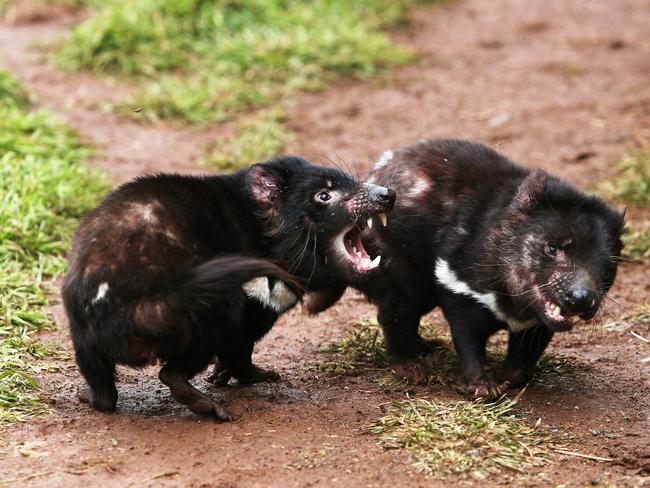Female Tassie devils more resilient in face of disease
When it comes to fighting disease, girl Tasmanian devils are proving to be the stronger sex. But University of Tasmania but researchers hold out hope for the boys.

Tasmania
Don't miss out on the headlines from Tasmania. Followed categories will be added to My News.
FEMALE Tasmanian devils have proven to be the more resilient sex, but researchers are holding out hope for the boys.
New research carried out by the University of Tasmania shows a sex bias in the ability of Tasmanian devils to cope with the Devil Facial Tumour Disease.
The School of Natural Sciences study found female devils were up to five times more resilient, because they lose less body weight after contracting the disease and live longer.
Researcher Dr Rodrigo Hamede said the findings were great news for the species, as it showed they were becoming increasingly resilient to the disease.
MORE DEVILS NEWS:
DEVIL OF A TIME FOR HOMEOWNERS
WHY TASMANIAN DEVILS FACE EXTINCTION
“It’s great news that the girls are doing so well, and we do hope the boys will catch up,” Dr Hamede said.
Dr Hamede said several studies in recent years had demonstrated that devils were adapting to the DFTD epidemic.
“This is another layer of evidence showing that devils are learning to live with the cancer and that coexistence between devils and DFTD is a possible outcome,” he said.
He said the long-term result for the Tasmanian devil may be that the species learns to live with the disease, as complete eradication appeared unlikely.
“The fact devils are trying so hard to survive despite this horrible cancer suggests they have a fast evolutionary response.
“They are adapting and evolving and I suspect that in the long term both females and males will develop ways to better deal with the cancer.”
The findings follow a three-year study into two wild populations of devils in the state’s North West.
Lead author and PhD candidate Manuel Ruiz said the study showed females lost less weight as the disease progressed, allowing them to live longer.
“The most surprising and interesting result is that females lose much less body condition than males as the disease progresses,” he said.
“This difference is up to five times. While males can lose up to 25 per cent of their body weight because of the cancer, in females this impact is approximately 5-10 per cent.”
The researchers found that devils generally live about 6 to 9 months after acquiring the cancer, but some females were able to live to 18 months.
“Females are coping better which allows them to raise their young,” Mr Ruiz said.
Mr Ruiz said females were also able to reduce their litter number, from an average of four to about two, if they became infected.
“Females have developed ways to compensate for the infection.”
UTAS researchers joined colleagues from Chile and the US for the study, ‘Sex bias in ability to cope with cancer: Tasmanian devils and facial tumour disease’, which was published last week in Proceedings of The Royal Society B: Biological Science


